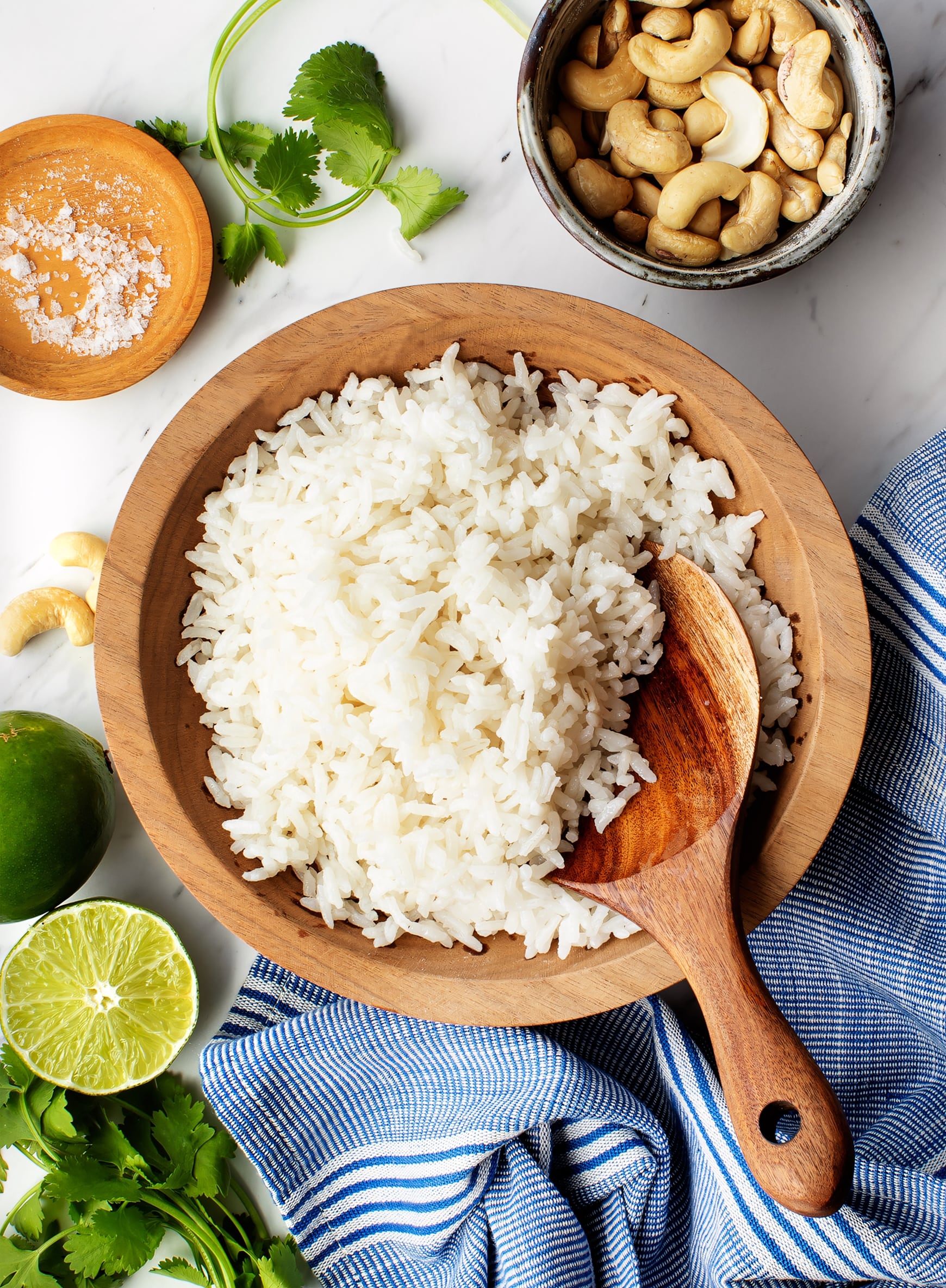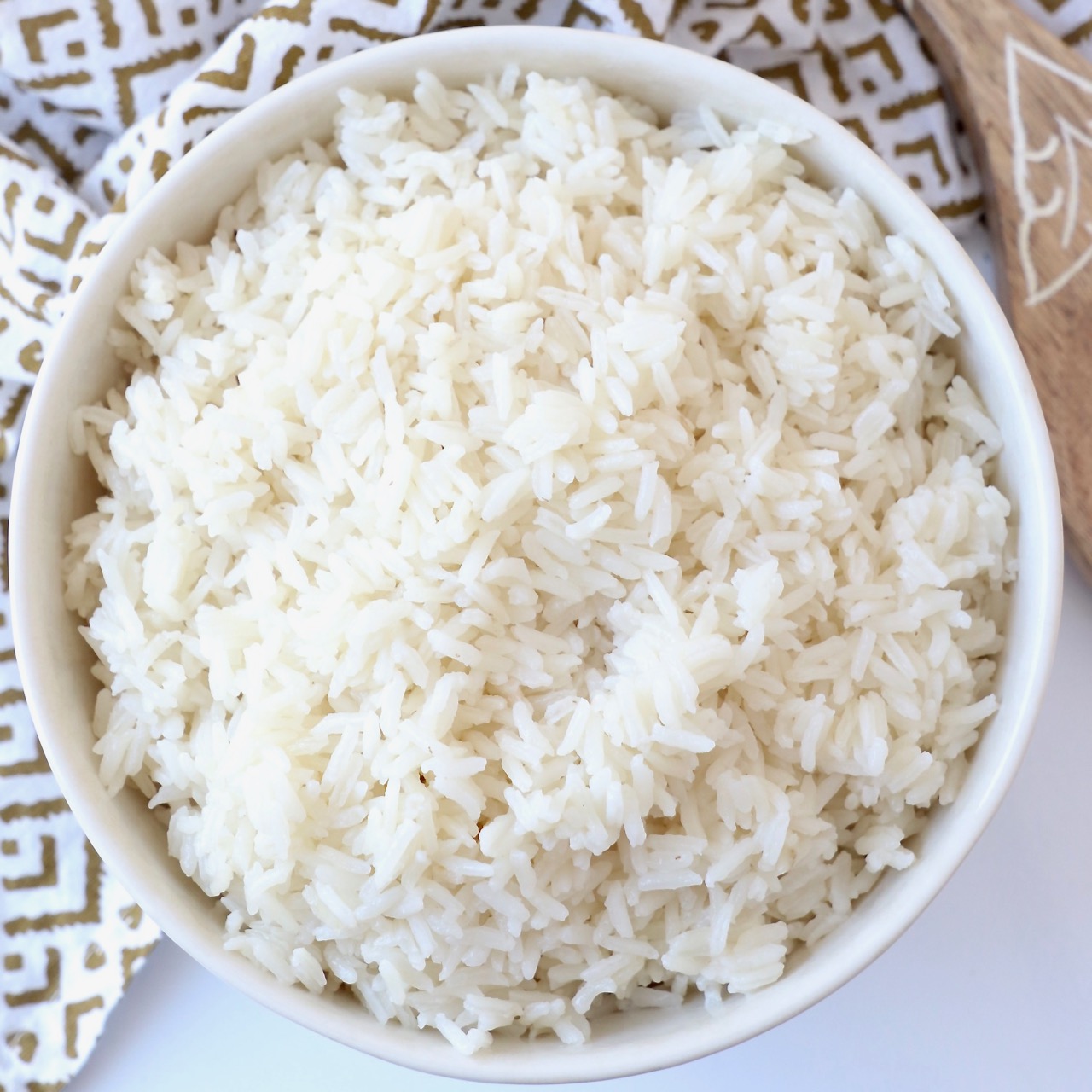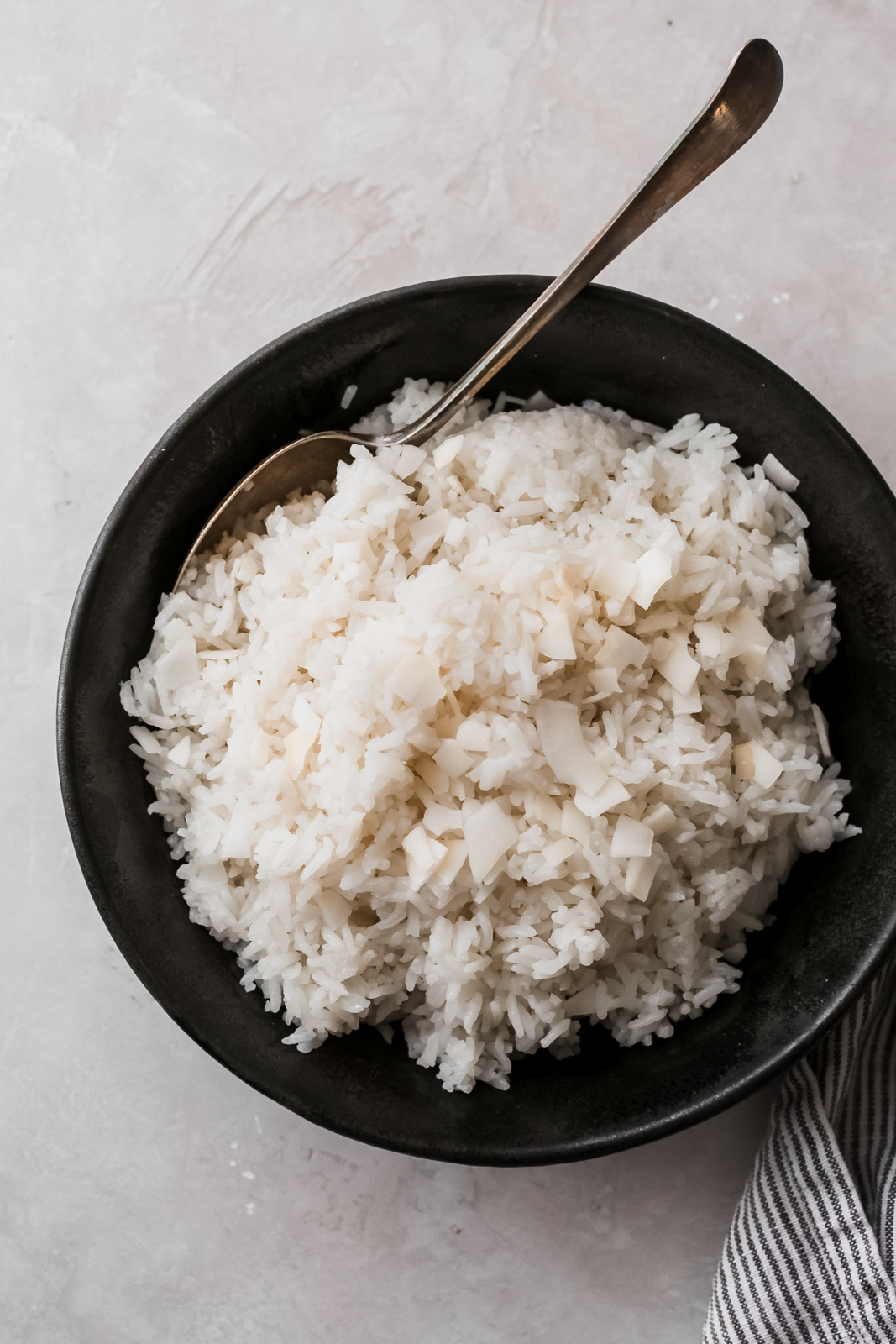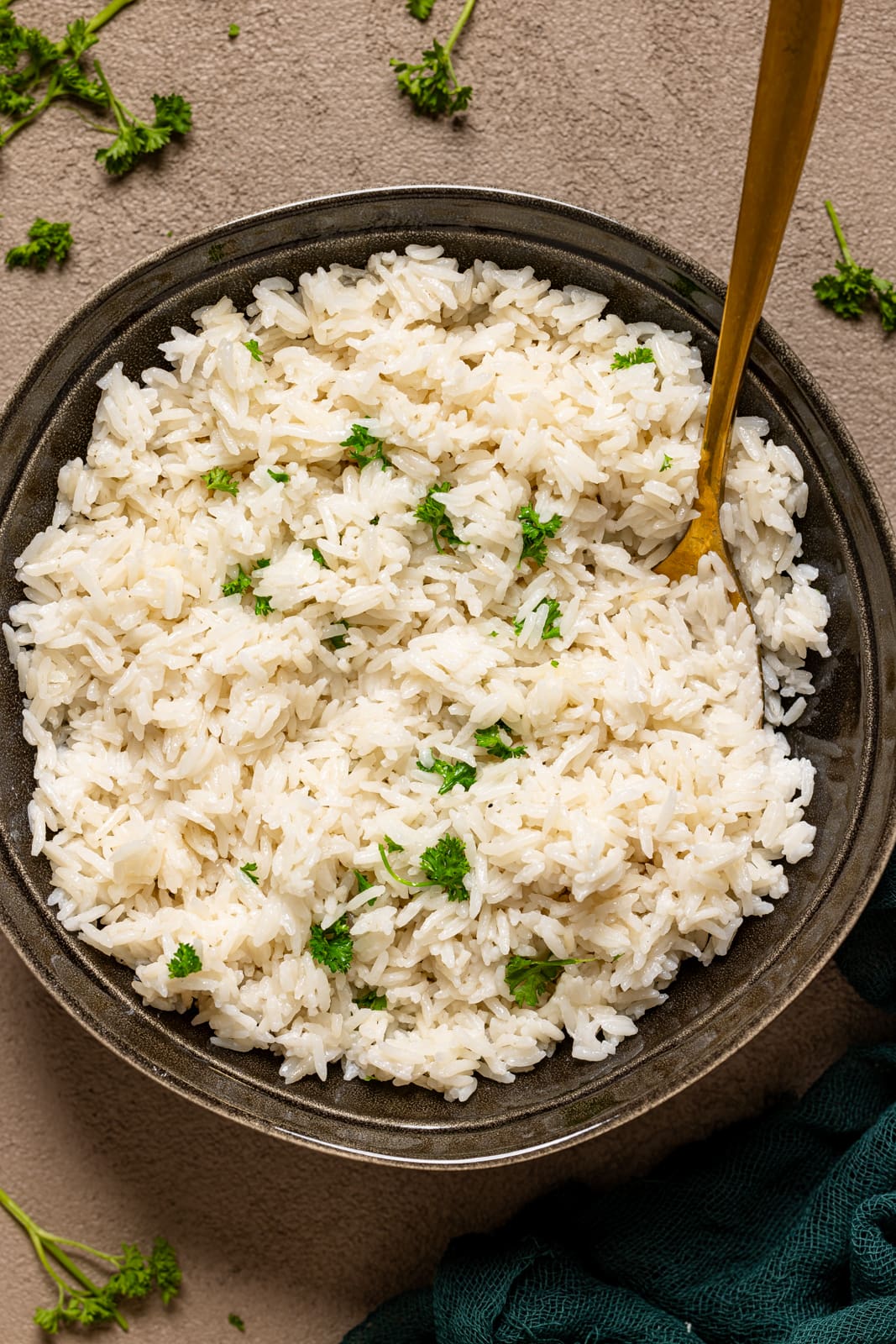Are you looking for a delicious way to add a tropical twist to your meal? I’m sharing my easy recipe for 16 Coconut Rice that’s fragrant, fluffy, and full of rich coconut flavor.
Coconut rice is a delightful dish that brings a tropical touch to any meal. Its fragrant aroma and light, fluffy texture make it an irresistible side. I’ve always loved how simple ingredients can create such a rich and flavorful dish.
Over the years, I’ve perfected this recipe to ensure every grain is perfectly tender and infused with buttery coconut flavor. Whether served with spicy curries or grilled dishes, coconut rice always wins hearts. It’s surprisingly easy to make and adds an exotic twist to everyday dinners.
In this guide, I’ll share my top tips and variations so you can make restaurant-quality coconut rice at home. Once you try it, you’ll see why it’s become a favorite in so many kitchens. Adjust the ingredients to suit your taste and enjoy the fragrant, satisfying results every time.
1. Coconut Rice

Coconut rice is a delicious, fragrant side dish made with just two simple ingredients: long-grain jasmine rice and rich, full-fat coconut milk. Cook the rinsed rice in coconut milk until fluffy and flavorful, and enjoy the incredible taste of buttery coconut in every bite!
Read the Recipe: Coconut Rice
2. Asian Coconut Rice
:max_bytes(150000):strip_icc()/56059-asian-coconut-rice-ddmfs-5475-hero-1x2-73775fec670d4a33b5204c29845d4314.jpg)
This Asian Coconut Rice is a quick and tasty side dish made with just five simple ingredients like coconut milk, jasmine rice, and a touch of sugar, coming together in about 30 minutes. It’s best served topped with toasted coconut and chopped cilantro, making it a rich, flavorful addition to any meal!
Read the Recipe: Asian Coconut Rice
3. Coconut Rice (fluffy, not gluey!)

Creating fluffy coconut rice is easier than ever by baking it in the oven instead of cooking on the stove, ensuring perfectly tender grains every time. Simply rinse and soak the rice, then combine heated coconut milk and water before baking it covered for 40 minutes—resulting in light, airy rice with none of the gluey or scorched issues!
Read the Recipe: Coconut Rice (fluffy, not gluey!)
4. Easy Coconut Rice

Easy Coconut Rice is a light, fluffy, and flavorful dish that’s quick to make, taking less than 30 minutes with just a few pantry staples. Its rich coconut flavor and aromatic scent make it a perfect side for Thai, South Asian, or tropical dishes, and it’s so delicious that over 52 five-star reviews swear by it!
Read the Recipe: Easy Coconut Rice
5. How to Make My Favorite Coconut Rice

Whip up a delicious batch of creamy coconut rice in just 30 minutes using only four simple ingredients: jasmine rice, full-fat coconut milk, water, and a pinch of salt. This fluffy, slightly sweet side pairs perfectly with salmon, stir-fries, or curries and is your new go-to for quick, flavorful dinners!
Read the Recipe: How to Make My Favorite Coconut Rice
6. Coconut Rice [preppykitchen.com]
![Coconut Rice [preppykitchen.com]](https://preppykitchen.com/wp-content/uploads/2024/03/Coconut-Rice-Social.jpg)
This quick and easy coconut rice comes together in just 30 minutes, turning plain white rice into a fragrant, fluffy masterpiece with the help of coconut milk, a splash of water, sugar, and salt. Rinse the rice well before cooking to ensure it stays light and non-gloppy, then simmer until the liquid is absorbed, and let it steam for perfectly tender, flavorful rice ready to elevate any meal!
Read the Recipe: Coconut Rice [preppykitchen.com]
7. Coconut Rice [www.thekitchn.com]
![Coconut Rice [www.thekitchn.com]](https://cdn.apartmenttherapy.info/image/upload/f_auto,q_auto:eco,c_fill,g_auto,w_1500,ar_3:2/k%2FPhoto%2FRecipes%2F2024-05-coconut-rice%2Fcoconut-rice-261)
Cooking up coconut rice is a breeze—just rinse some white jasmine rice, then simmer it in a mix of coconut milk, water, and a pinch of salt for about 20 minutes. The result is fluffy, rich, and subtly sweet rice that’s perfect as a side dish or topped with a fried egg for a quick, satisfying meal.
Read the Recipe: Coconut Rice [www.thekitchn.com]
8. Coconut Rice (Instant Pot or Stove Top)

Learn to make fluffy coconut rice using white jasmine rice and coconut milk—perfect as a side or a base for bowls! Whether in an Instant Pot or on the stovetop, this easy, flavorful dish adds a tropical touch to any meal.
Read the Recipe: Coconut Rice (Instant Pot or Stove Top)
9. 5 Ingredient Instant Pot Coconut Rice

This 5-ingredient Instant Pot coconut rice is a game-changer—simply combine rinsed jasmine rice, coconut milk, water, salt, and a touch of sugar, then let your pressure cooker work its magic! The result is creamy, slightly sweet, jasmine-scented rice that pairs perfectly with all your savory dishes, and best of all, it’s easy, quick, and naturally vegan and gluten-free.
Read the Recipe: 5 Ingredient Instant Pot Coconut Rice
10. Coconut Rice [www.budgetbytes.com]
![Coconut Rice [www.budgetbytes.com]](https://www.budgetbytes.com/wp-content/uploads/2022/04/Coconut-RIce-plate.jpg)
This Coconut Rice is a mouthwatering dish that blends fragrant jasmine rice with rich coconut milk and a hint of savory garlic, creating a simple yet insanely delicious side. In just about 30 minutes, you’ll have a soft, flavorful rice that’s perfect to enjoy on its own or pair with your favorite dishes!
Read the Recipe: Coconut Rice [www.budgetbytes.com]
11. Coconut Rice Recipe

Coconut Rice is a delicious and simple South Indian dish made by mixing fluffy cooked rice with freshly grated coconut and seasoned spices like curry leaves, chilies, and ginger. It’s perfect for festivals or a quick meal, and you can enjoy it plain or with a side of curry, making every bite bursting with flavor and aroma.
Read the Recipe: Coconut Rice Recipe
12. Fluffy Coconut Rice

Get ready to enjoy the fluffiest, creamiest coconut rice ever, made with just four simple ingredients in under 25 minutes! This light, tender dish features a rich coconut flavor perfect as a side or starting point for curries, grain bowls, and more.
Read the Recipe: Fluffy Coconut Rice
13. Coconut Rice [carlsbadcravings.com]
![Coconut Rice [carlsbadcravings.com]](https://carlsbadcravings.com/wp-content/uploads/2021/05/Coconut-Rice-6a.jpg)
This Coconut Rice recipe is a light, fluffy, and coconut-infused side that’s super easy to make at home and tastes like it’s straight from a restaurant! Just rinse, toast, and cook the rice with coconut milk and water, then let it steam to perfection—perfect for pairing with anything from Southeast Asian dishes to tropical favorites!
Read the Recipe: Coconut Rice [carlsbadcravings.com]
14. coconut rice recipe | nariyal chawal | south indian coconut rice
This South Indian Coconut Rice is a delightful and flavorful dish made with grated fresh coconut and basmati rice, giving it a light and aromatic taste. It’s perfect as a side dish to spicy curries like kurma or kuzhambu, or even enjoyed on its own for breakfast or lunch—simply mix it up, and you’re all set for a tasty meal!
Read the Recipe: coconut rice recipe | nariyal chawal | south indian coconut rice
15. Coconut Rice [www.gimmesomeoven.com]
![Coconut Rice [www.gimmesomeoven.com]](https://www.gimmesomeoven.com/wp-content/uploads/2023/01/Coconut-Rice-Recipe-9.jpg)
This Coconut Rice is a quick and easy dish that comes together in about 30 minutes, boasting a fluffy texture and a lightly-sweet coconut flavor. Simply cook long-grain white rice with full-fat coconut milk, a touch of sugar and salt, then finish with your favorite toppings like toasted coconut flakes or fresh herbs for an extra burst of flavor!
Read the Recipe: Coconut Rice [www.gimmesomeoven.com]
16. Coconut Rice — Chrissy Teigen Recipe

This Coconut Rice recipe by Chrissy Teigen is a delightful mix of sweet and salty flavors that pairs perfectly with any meal, especially BBQ. Simply toast the shredded coconut until golden, then cook rinsed jasmine rice in a rich blend of coconut milk, water, sugar, and salt until tender, finishing with a sprinkle of toasted coconut for extra crunch and flavor. This dish is sure to be a house favorite that’s worth every extra calorie!
Read the Recipe: Coconut Rice — Chrissy Teigen Recipe
